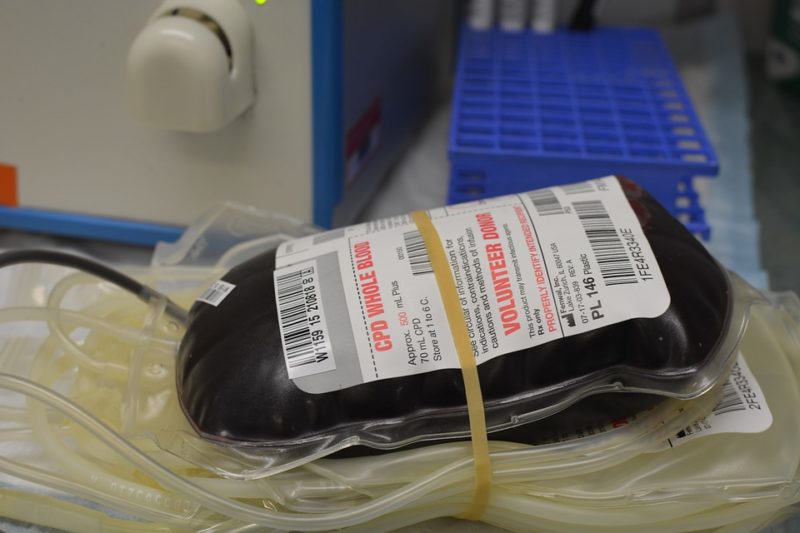Do you want to know what is an autologous blood donation? It is referred to as intraoperative blood salvage or cell salvage. This is a unique blood transfusion because the blood is from the same patient.
During the operation, the patient or the patient’s family has the choice to have a machine set up to salvage any of the blood that spills out and is processed or “cleaned” so it can be infused back to the patient.
This is mainly used for those serious operations with a considerable risk of significant bleeding that could cause the patient’s life or permanent consequences that could affect their quality of life. Don’t worry; this article will explain that in a few easy steps. We’re also going to discuss how it differs from regular blood donation. Finally, you will be able to understand the advantages and disadvantages of this kind of blood donation and where it can be beneficial for those who are expecting surgery.
Most people don’t know about this type of blood donation until they are expecting surgery soon. So it is good to know about it beforehand. This article will take you step by step on how it works and why it is a reliable method. Keep on reading.
What Is The Difference Between Autologous And Allogeneic Blood Transfusion
Allogenic blood transfusion is when the blood is coming from an unrelated/anonymous donor. Allogenic blood transfusion is the standard type of blood transfusion operated in blood donation centers. When you have donated some blood, which you will infuse to a stranger you have no relations with, that is called an allogeneic blood transfusion. While this is given careful inspection before being infused and will undergo several blood tests to ensure the blood won’t harm the patient in any way possible, there is still a risk of transmitting an infection.
How Do I Get Autologous Blood Donations?
So what is an autologous blood donation? To have an autologous blood transfusion, the patient should first give an autologous blood donation. This occurs before the surgery starts, where blood will be collected from that patient to be transfused when required anytime during the surgery. Here are a few requirements for an autologous blood donation.
#1. Doctor’s prescription
You cannot request an autologous blood donation; just like any other blood transfusion, you must first get a doctor’s prescription. The patient’s age should not be a hindrance for someone who wants an autologous donation.
#2. Good health
Of course, the patient should be in generally good health to be able to undergo blood donation. For the time they will have a percentage of their blood lost, they will feel a little weaker. They must also have no active blood-borne infections as this is a considerable risk of spreading. This could also mean that if the patient has an active infection or any heart complications, you cannot go through with the blood donation. When the patient is frail, they may be prescribed iron supplements. Their hemoglobin count should pass the criteria needed for someone to donate blood.
#3. Period
Make this decision in advance, as you cannot donate within the 72 hours left before the surgery. Since you will need a doctor’s prescription and confirm you are in good health, you will need a considerable amount of time to take this into action.
#4. Inquire about your surgery
If the doctor sees that your type of surgery has a much lesser risk of a need for emergency blood transfusions, an autologous blood donation may not be necessary. The extra blood from an autologous blood donation is discarded due to safety protocol; that is why it is carefully calculated whether the patient will need one or not.
What Are The Methods Of Autologous Blood Transfusion
There are different methods of autologous blood transfusions. Methods used to depend on what the patient conforms to as long as the doctor sees it fit. Here are the different methods.
#1. Predeposit autologous transfusion
Blood collection starts about 3 to 5 weeks before the surgery. Depending on the units taken during this time, the total amount collected will be approximately 1-2 liters.
#2. Intraoperative acute normovolaemic haemodilution
This method requires blood collecting in the operating room, more specifically in the anesthetic area, before the operation officially starts. This is mainly used for a patient whose blood loss has been predicated, about 1-1.5 liters.
#3. Salvage autologous transfusion
This method of autologous transfusion is done during the surgery. With the patient’s consent or the patient’s guardian, the blood lost during the surgery is collected in a designated centrifuge. This will then filter the blood until it is ready to be transfused back into the patient.
Conclusion
Now you know what is an autologous blood donation and why it is different from the commonly known allogeneic blood donation. We this article has helped in your understanding of the two types. Thank you for reading! And oh, you may want to read related articles; know what to eat before blood donation and what to eat after blood donation.

